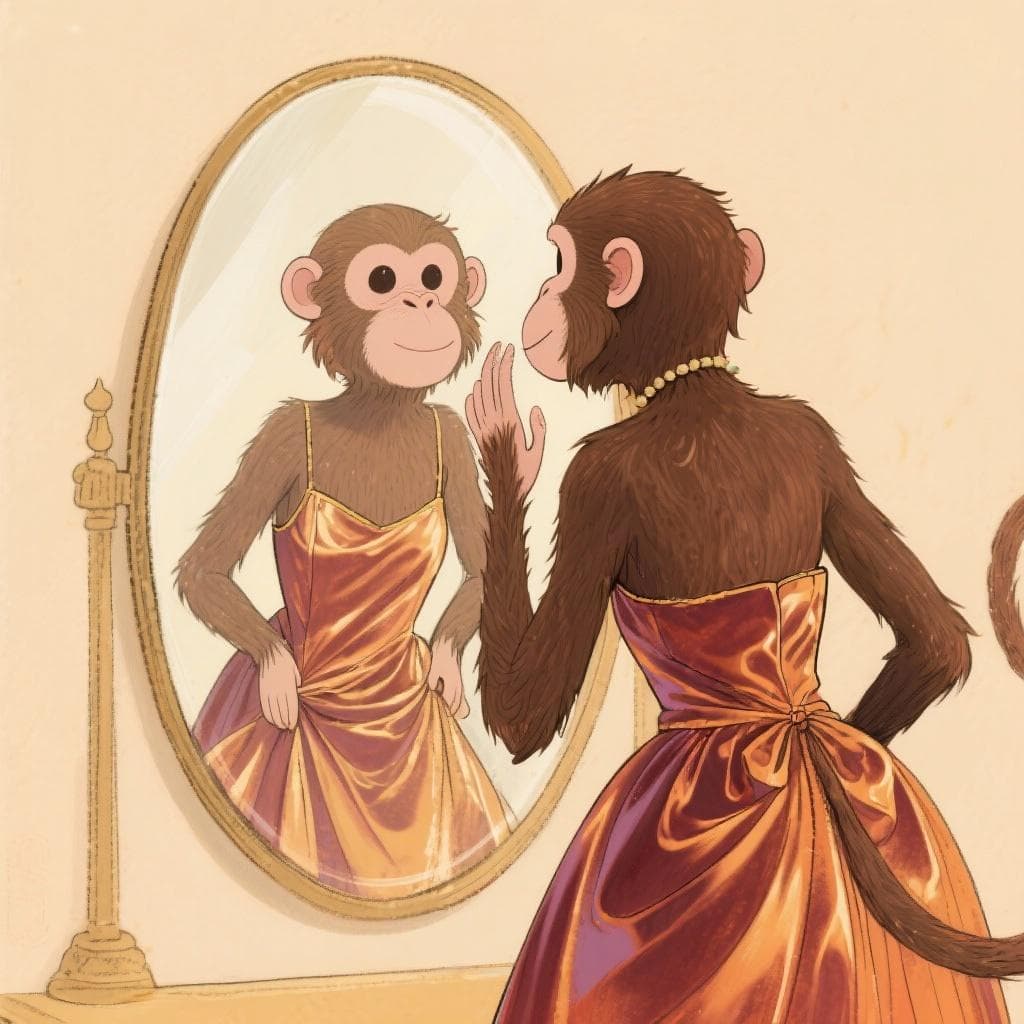"Aunque la mona se vista de seda, mona se queda."
/own-KEH lah MOH-nah seh VEES-tah deh SEH-dah, MOH-nah seh KEH-dah/
Even if a monkey dresses in silk, it's still a monkey.
💡 Understanding the Quote
"Aunque la mona se vista de seda, mona se queda."
🎨 Visual Representation

This famous proverb reminds us that outward appearances can't change one's true, essential nature.
🔑 Key Words
📖 Context
A traditional Spanish proverb (refrán) popularized by the fable 'La mona' in Tomás de Iriarte's collection 'Fábulas literarias' (1782).
📝 In Action
Intentó actuar de forma muy refinada en la cena, pero al final su mala educación salió a la luz. Ya sabes, aunque la mona se vista de seda, mona se queda.
B2He tried to act very refined at dinner, but in the end his bad manners came out. You know, even if a monkey dresses in silk, it's still a monkey.
Le pusieron un nombre nuevo y un logo moderno a la empresa, pero los problemas de siempre continúan. Es lo de 'aunque la mona se vista de seda...'
C1They gave the company a new name and a modern logo, but the same old problems continue. It's a case of 'you can put lipstick on a pig...'
✍️ About the Author
📜 Historical Context
This saying was cemented in Spanish culture by Tomás de Iriarte, an 18th-century writer of the Spanish Enlightenment. He included it in his fable 'The Monkey,' where a monkey in a dress dances for an audience but immediately reverts to its true nature when someone throws nuts on the stage. Fables like this were popular for teaching moral lessons in an accessible way.
🌍 Cultural Significance
This is one of the most common proverbs in the entire Spanish-speaking world. It's a go-to cultural shorthand for talking about authenticity, pretentiousness, and the idea that true character will always shine through, for better or worse. It reflects a cultural value placed on substance over style.
📚 Literary Analysis
The proverb's power comes from its vivid, slightly comical animal metaphor. The image of a monkey in a fancy silk dress is memorable and instantly understandable. The rhyming structure ('seda' and 'queda') makes it catchy and easy to remember, which is a key trait of proverbs that stand the test of time.
⭐ Usage Tips
Commenting on Superficiality
Use this proverb when you observe someone trying to mask their true nature with superficial things like expensive clothes, fancy titles, or a polished exterior. It's often used when talking about someone rather than to them, as it can be perceived as critical.
Be Mindful of Tone
While a very common saying, it can sound judgmental. It's best used in informal conversations among friends or family who share the cultural context. Avoid it in professional or formal settings where it might be misinterpreted or sound too folksy.
🔗 Related Quotes
✏️ Quick Practice
💡 Quick Quiz: Aunque la mona se vista de seda, mona se queda.
Question 1 of 2
What is the main message of 'Aunque la mona se vista de seda, mona se queda'?
🏷️ Categories
Themes:
Frequently Asked Questions
Is this phrase considered offensive?
It can be, depending on the context. While it's a very common proverb, using the word 'mona' (monkey) to describe a person can be insulting. It's generally used to comment on a situation or a third person, not said directly to someone's face.
Does this proverb have a positive interpretation?
Yes, it can be seen as a celebration of authenticity. It suggests that one's true self is powerful and unchangeable, encouraging people to be genuine and value substance over superficial appearances.


